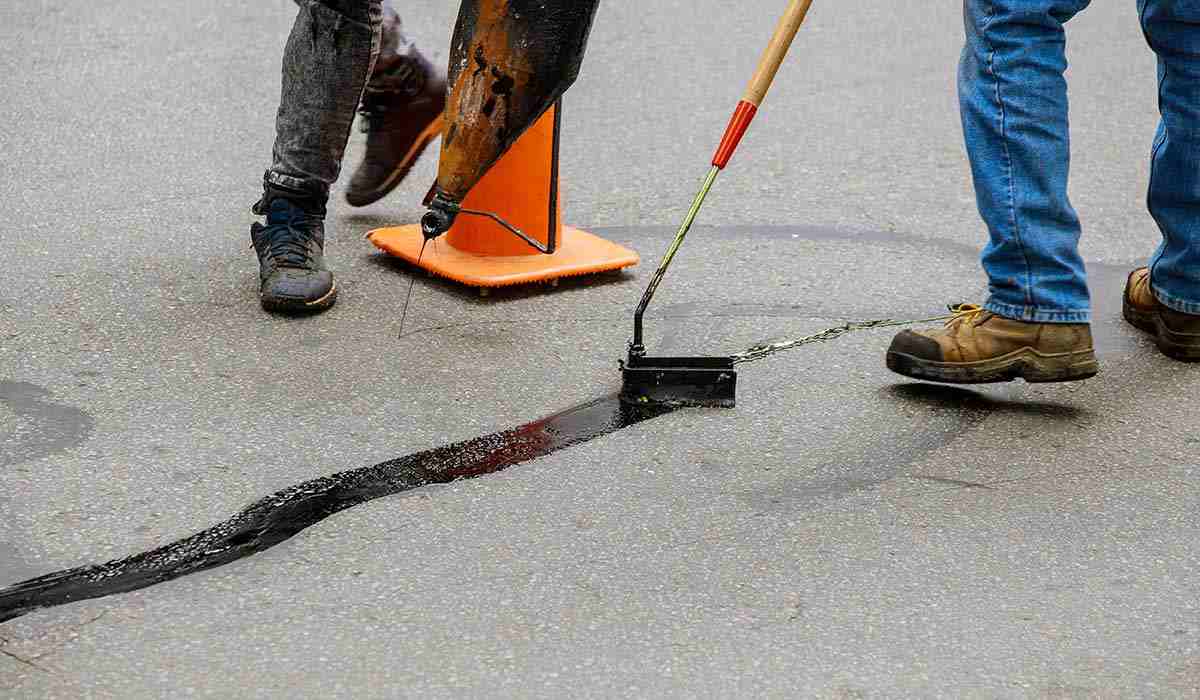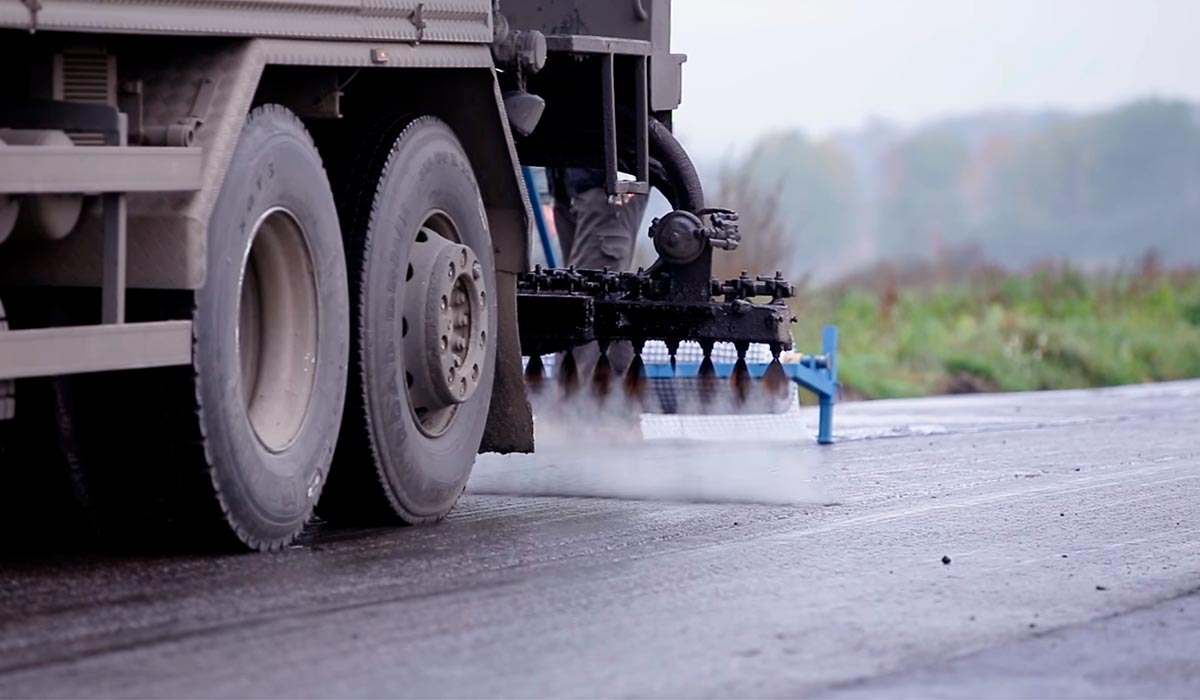The bitumen anti stripping agent is a high-performance, non-toxic bitumen additive that improves asphalt-aggregate adhesion and significantly reduces moisture damage in hot and warm mix asphalt applications, in addition to cold patch and cold mix applications. Anti-strip can also be used in the cold mix and cold mix applications. When it comes to creating a bituminous pavement that is long-lasting, it is essential to have a bituminous layer that adheres well to the aggregate surface. The process whereby a bituminous film is removed from the surface of a hydrophilic aggregate due to the presence of water is referred to as stripping.  Failures of flexible pavements can be seen as a result of stripping. These failures include rutting, corrugation, shoving, raveling, and cracking. The separation of the asphalt binder and the aggregate that is caused by the presence of moisture is one of the primary factors that contribute to the deterioration of asphalt. Hydrated lime and liquid anti-stripping agents make up the two primary categories of anti-stripping agents for asphalt, respectively. When it comes to reducing the risk of stripping, hydrated lime is the best ingredient to use. When hydrated lime is added to the asphalt mix, the pace at which the aggregate is bound to the binder, as well as the strength of that binding, are both increased. The sticking forces that exist between the aggregate and the asphalt can also be increased by using a liquid anti-strip. When selecting an anti-strip agent, there are a variety of factors to think about; nevertheless, acceptance and a history of success are two of the most important variables. The chemistry of the aggregate, and more especially the amount of calcium and silica that is present in the aggregate, is a primary contributor to the phenomenon known as antistripping. A greater possibility for stripping exists for certain kinds of aggregates than it does for others. Because the use of limestone and marble aggregates reduces the risk of moisture-induced stripping, the use of hydrated lime is often not required. Granite and quartz-rich aggregates are more prone to stripping, which is why anti-strip chemicals such as hydrated lime are required. Failing to use these agents could result in the asphalt failing early. The amount of money spent and how simple it is to put into practice are the last important aspects to take into account. Although hydrated lime is the most cost-effective choice, liquid anti-strip may be preferred by contractors due to its easier application.
Failures of flexible pavements can be seen as a result of stripping. These failures include rutting, corrugation, shoving, raveling, and cracking. The separation of the asphalt binder and the aggregate that is caused by the presence of moisture is one of the primary factors that contribute to the deterioration of asphalt. Hydrated lime and liquid anti-stripping agents make up the two primary categories of anti-stripping agents for asphalt, respectively. When it comes to reducing the risk of stripping, hydrated lime is the best ingredient to use. When hydrated lime is added to the asphalt mix, the pace at which the aggregate is bound to the binder, as well as the strength of that binding, are both increased. The sticking forces that exist between the aggregate and the asphalt can also be increased by using a liquid anti-strip. When selecting an anti-strip agent, there are a variety of factors to think about; nevertheless, acceptance and a history of success are two of the most important variables. The chemistry of the aggregate, and more especially the amount of calcium and silica that is present in the aggregate, is a primary contributor to the phenomenon known as antistripping. A greater possibility for stripping exists for certain kinds of aggregates than it does for others. Because the use of limestone and marble aggregates reduces the risk of moisture-induced stripping, the use of hydrated lime is often not required. Granite and quartz-rich aggregates are more prone to stripping, which is why anti-strip chemicals such as hydrated lime are required. Failing to use these agents could result in the asphalt failing early. The amount of money spent and how simple it is to put into practice are the last important aspects to take into account. Although hydrated lime is the most cost-effective choice, liquid anti-strip may be preferred by contractors due to its easier application. 
Stripping bitumen
The loosening of the binding between the bitumen and asphalt binder and the aggregates usually starts at the bottom of the HMA layer and moves its way up through the layer. It is customarily referred to as "raveling" when the process of stripping starts at the surface and continues downward. During the production of the mixture, careful management of the quality of the formulation's components—for example, aggregates, bitumen, and other components—as well as the plant's operating conditions—for instance, temperature and mixing time—ensures that the mineral aggregate surfaces are completely coated by bitumen at the desired layer thickness. This is accomplished by controlling both the quality of the formulation's ingredients (such as aggregates, bitumen, Active adhesion can be seen when bitumen is used to wet and cover the surfaces of aggregates as the mixture is being produced in a plant. Similarly, low air gaps are something that should be sought out during construction. This is done in part due to the fact that the interfacial glue between bitumen and aggregate may be vulnerable to being weakened or completely broken by water that seeps into the pavement. Stripping is a sort of passive adhesion that refers to the process of breaking the adhesion between bitumen and aggregate in compressed mixtures. Stripping may only occur in mixtures that have been compacted. Therefore, the degree of strength and longevity of the adhesive connection (both passive and active) that exists between bitumen and an aggregate surface is dependent on a wide variety of production and construction variables. Although the phenomenon known as "stripping," in which asphalt is removed from the surface of aggregate particles by water, is a complicated one that is not yet fully understood, the mineralogy and chemical composition of aggregate have been identified as significant factors that contribute to the phenomenon. In general, certain aggregates have a stronger attraction to water than asphalt does. These aggregates have a propensity to be acidic and experience stripping when they are exposed to water. On the other hand, certain aggregates prefer asphalt over water in terms of their compatibility (hydrophobic). The majority of these aggregates have a fundamental composition and do not experience stripping issues. In addition, the surface charge of an aggregate will change as it comes into contact with water, which will have an effect on both its adhesion to asphalt cement and its susceptibility to damage from moisture. In conclusion, it would appear that the aggregate surface chemistry plays a significant component in the stripping process.
Stripping is a sort of passive adhesion that refers to the process of breaking the adhesion between bitumen and aggregate in compressed mixtures. Stripping may only occur in mixtures that have been compacted. Therefore, the degree of strength and longevity of the adhesive connection (both passive and active) that exists between bitumen and an aggregate surface is dependent on a wide variety of production and construction variables. Although the phenomenon known as "stripping," in which asphalt is removed from the surface of aggregate particles by water, is a complicated one that is not yet fully understood, the mineralogy and chemical composition of aggregate have been identified as significant factors that contribute to the phenomenon. In general, certain aggregates have a stronger attraction to water than asphalt does. These aggregates have a propensity to be acidic and experience stripping when they are exposed to water. On the other hand, certain aggregates prefer asphalt over water in terms of their compatibility (hydrophobic). The majority of these aggregates have a fundamental composition and do not experience stripping issues. In addition, the surface charge of an aggregate will change as it comes into contact with water, which will have an effect on both its adhesion to asphalt cement and its susceptibility to damage from moisture. In conclusion, it would appear that the aggregate surface chemistry plays a significant component in the stripping process.  However, particular links between causes and effects are still in the process of being determined. Bottom-up stripping is very difficult to identify since it expresses itself on the pavement surface as various types of distress, such as rutting, shoving/corrugations, raveling, or cracking. Bottom-up stripping can also cause raveling, which is a type of raveling. In most cases, a core sample is required in order to unequivocally establish that stripping is a type of pavement distress. Inadequate aggregate surface chemistry, water present in the HMA that causes moisture damage, and overlays placed on top of an already existing open-graded surface course are all potential causes of stripping. Investigating a stripped pavement is necessary in order to establish the underlying reason for its collapse. In most cases, the stripped pavement needs to be removed and resurfaced once any subsurface drainage issues have been resolved. To avoid further issues such as stripping or pavement failures, it is critical to pay close attention to the binding agent and bitumen employed in the mixture.
However, particular links between causes and effects are still in the process of being determined. Bottom-up stripping is very difficult to identify since it expresses itself on the pavement surface as various types of distress, such as rutting, shoving/corrugations, raveling, or cracking. Bottom-up stripping can also cause raveling, which is a type of raveling. In most cases, a core sample is required in order to unequivocally establish that stripping is a type of pavement distress. Inadequate aggregate surface chemistry, water present in the HMA that causes moisture damage, and overlays placed on top of an already existing open-graded surface course are all potential causes of stripping. Investigating a stripped pavement is necessary in order to establish the underlying reason for its collapse. In most cases, the stripped pavement needs to be removed and resurfaced once any subsurface drainage issues have been resolved. To avoid further issues such as stripping or pavement failures, it is critical to pay close attention to the binding agent and bitumen employed in the mixture.  Our company provides bitumen in all grades and at the most competitive prices. Please contact us if you require any other information. Our sales representatives will answer all of your questions and assist you with any inquiries.
Our company provides bitumen in all grades and at the most competitive prices. Please contact us if you require any other information. Our sales representatives will answer all of your questions and assist you with any inquiries.

0
0